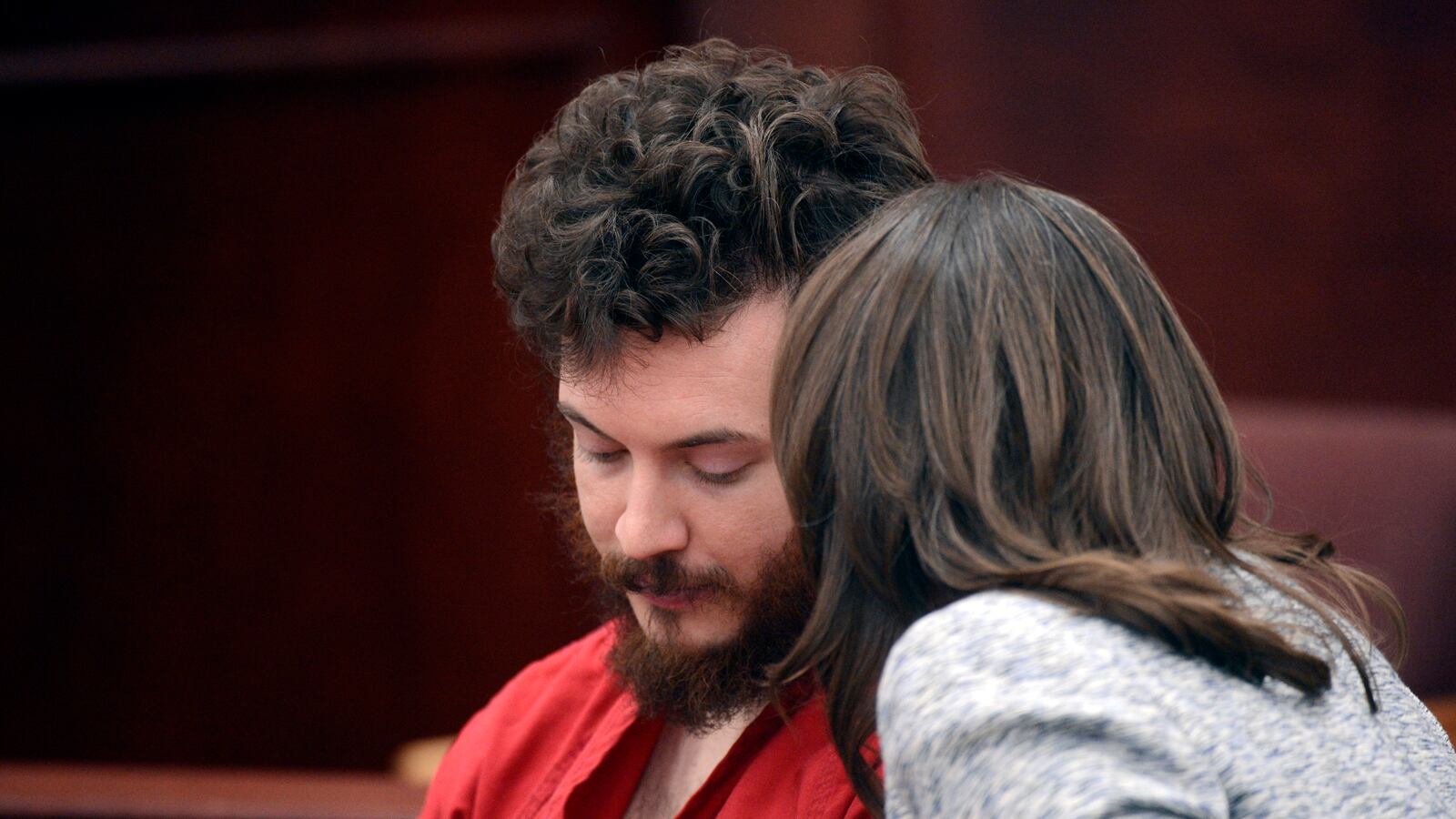“Justice is death.”
With those three words, Arapahoe County District Attorney George Brauchler attempted on Monday to justify his decision to seek the death penalty for James Holmes, who is charged with murdering 12 people and injuring 58 more in a movie theater in Aurora, Colorado, last July.

Court filings released last week indicated that Holmes’s attorneys had offered a deal in which Holmes would accept life in prison without the possibility of parole in exchange for prosecutors not seeking the death penalty. But on Monday, Brauchler rejected that offer, explaining that he had discussed the decision with at least 60 people who lost a loved one in Holmes’s massacre.
Brauchler did not say whether he told those women and men that if his office succeeds is sentencing Holmes to death, they will have to wait at least a decade before the sentence is carried out—if it is carried out at all. Nor did he say whether he told them that his decision will have the perverse consequence of making those loved ones largely irrelevant at the trial, which will instead be all about Holmes.
That is perhaps an ironic outcome, but it is a necessary one. A central strand of modern death-penalty law is that death is different from ordinary imprisonment. It is different because it ends a life, and for that reason it is irrevocable. Therefore, our criminal-justice system is much more careful in death-penalty cases. For example, unlike other trials, which focus almost entirely on what the defendant did, death-penalty trials focus on the individual characteristics of the defendant, and whether there are factors that would mitigate against sending him or her to state-sanctioned death.
That focus is as it should be. If prosecutors are going to ask a jury to send someone to the electric chair (or gurney or firing squad), that person’s lawyers must have an opportunity to tell the jurors all the reasons that they should not. It takes months, if not years, for defense lawyers to gather those facts—many of which would be irrelevant in a non-capital case, such as whether the defendant was abused during childhood or suffers from a mental illness—and weeks to present them to the jury. Meanwhile, the family members of the victims are left watching.
At this point, no one besides James Holmes himself—and perhaps his parents, his therapist, and his lawyers—knows whether he was diagnosed as suffering from a mental illness. (Of course, any definition of mental illness that does not include a young man who dresses up in tactical gear and dyed-orange hair and slaughters innocent men, women, and children is drastically in need of amendment.) But the point is this: Since the prosecutor is seeking the death penalty, we will now be hearing about Holmes’s mental condition for months and years. If he had been sent off to prison instead, we would never hear about him again. Ask the loved ones of the 77 people Anders Behring Breivik killed in Norway in 2011 what they know about the murderer’s personal life and his mental health, and they will tell you: nothing. Breivik was sent off to prison less than a year after committing his extraordinary carnage, and if he is not (and never will be) completely forgotten, he is at least no longer sitting in a courtroom with his sickening smirk and defiant white-power salute.
In this light, Brauchler’s deceptively simple formulation sounds less self-evident.
The question arises, what sort of “justice” is he imagining that requires Holmes’s death? Does he believe, for example, that by killing Holmes, Colorado might persuade another deranged individual not to inflict similar senseless carnage? That question answers itself, because it is nonsense to conclude that a person considering such a horrific, irrational act will ever undertake a rational cost-benefit analysis. (To the contrary, such perpetrators often plan to die in the act; Holmes was unusual in that he laid down his weapons and surrendered.)
Perhaps Holmes’s offer to accept life without parole proves that he desires to live, no matter the conditions; or perhaps it simply proves the competence of his trial lawyers in persuading him to bypass a lengthy trial. Either way, Colorado’s decision to rebuff that offer comes at a hefty price. At 25, Holmes can be expected to live at least 40 to 50 years in prison. At a cost of $20,000 to 25,000 per year per inmate, the state could expect to spend something north of a million dollars to put Holmes away forever. Instead, it will spend at least twice that amount, and probably closer to four or five times that amount, pursuing a death sentence it may never get to carry out.
So if neither economics nor deterrence explains Brauchler’s decision, what does?
The answer is that, like most death-penalty supporters, Brauchler is confusing an impulse with an argument. We do not kill murderers because it makes sense in any rational or analytical way; we kill them because as a society we have long nourished the instinct, the feeling, that anyone who murders should be executed.
But this instinct, however well established in human history, is not equivalent to justice. To the contrary, it is more often antithetical to justice. After all, lynch mobs arise from the same instinctive place, and we outlawed those long ago. Our courtrooms are supposed to be places where reason and logic prevail over even the strongest emotions. If it were any other way, we would quickly cease to be a nation of laws.
Any human being who loves someone else can understand the impulse to see a murderer put to death. A version of that impulse explains why some loved ones of Holmes’s victims urged the district attorney to seek death, and it is precisely that impulse that explains why those survivors claim they cannot wait to witness Holmes’s execution.
But that impulse is an emotion, not a reason, and while it is easy to understand why many people have it, Brauchler should know the difference between a raw feeling and a reasoned argument. By ignoring that distinction, he has not only perverted the meaning of justice but also insured that those who lost loved ones on that terrible night last July will have to keep reliving the horror, and looking at the face of the killer, for years to come.






